Related Research Articles

Baron Hotham, of South Dalton in the County of York, is a title in the Peerage of Ireland. It was created in 1797 for the naval commander Admiral William Hotham, with remainder to the heirs male of his father. Hotham was the third son of Sir Beaumont Hotham, 7th Baronet, of Scorborough, and in 1811 he also succeeded his nephew as eleventh Baronet. Lord Hotham never married and on his death in 1813 he was succeeded in both titles by his younger brother Beaumont, the second Baron and twelfth Baronet. He had previously represented Wigan in the House of Commons.

There have been three baronetcies created for persons with the surname Croft, one in the Baronetage of England and two in the Baronetage of the United Kingdom. All three creations are extant as of 2008.

Baron Muncaster was a title in the Peerage of Ireland and in the Peerage of the United Kingdom held by the Pennington family. This family, of Muncaster Castle in Cumberland, descended from William Pennington, who was created a Baronet, of Muncaster in the County of Cumberland, in the Baronetage of England in 1676. He was succeeded by his son, the second Baronet. He represented Cumberland in the House of Commons. His son, the third Baronet, also sat as Member of Parliament for this constituency. He died childless and was succeeded by his younger brother, the fourth Baronet. On his death the title passed to his son, the fifth Baronet. He was Member of Parliament for Milborne Port and Colchester. In 1783, ten years before he succeeded his father in the baronetcy, he was raised to the Peerage of Ireland as Baron Muncaster, with remainder in default of male issue of his own to his younger brother Lowther Pennington and the heirs male of his body.
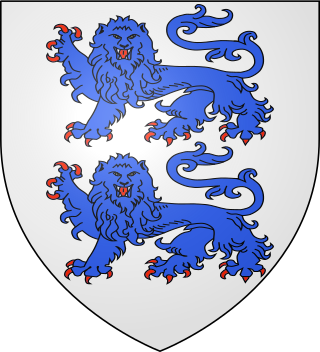
There have been two baronetcies created for members of the Hanmer family of Flintshire, Wales, one in the Baronetage of England and one in the Baronetage of Great Britain. Only one creation is extant as of 2008. The third Baronet of the second creation was elevated to the peerage as Baron Hanmer in 1872, a title which became extinct in 1881. The family name derived from the manor of Hanmer in the Diocese of St. Asaph.
There have been two baronetcies created for people with the surname Heathcote, both in the Baronetage of Great Britain and both created in 1733. The holders of the first creation were later elevated to the peerage as Baron Aveland and Earl of Ancaster, which titles are now extinct. However, both baronetcies are extant as of 2008.

There have been four baronetcies created for persons with the surname Sykes, two in the Baronetage of Great Britain and two in the Baronetage of the United Kingdom. Three of the creations are extant as of 2008.

The Chaytor family is an English gentry family on which has been conferred two baronetcies, one in the Baronetage of England and one in the Baronetage of the United Kingdom and several knighthoods. As of 2008 one baronetcy is extinct.
There have been six baronetcies created for persons with the surname Brooke, one in the Baronetage of England, one in the Baronetage of Ireland and four in the Baronetage of the United Kingdom. As of 2015 four of the creations are extant, though one has been subsumed into a peerage.
There have been three baronetcies created for persons with the surname Noble, all in the Baronetage of the United Kingdom.
There have been two baronetcies created for persons with the surname Williamson, one in the Baronetage of England and one in the Baronetage of the United Kingdom.
There have been four baronetcies created for persons with the surname Holland, one in the Baronetage of England and three in the Baronetage of the United Kingdom.
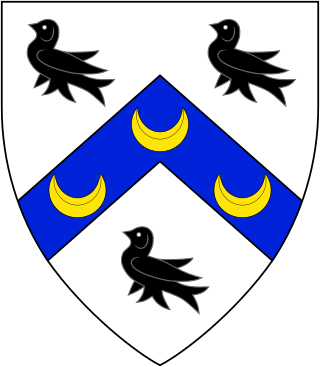
There have been seven baronetcies created for persons with the surname Watson, one in the Baronetage of England, one in the Baronetage of Great Britain and five in the Baronetage of the United Kingdom. One creation is extant as of 2016.
There have been four baronetcies created for persons with the surname Musgrave, one in the Baronetage of England, one in the Baronetage of Nova Scotia, one in the Baronetage of Ireland and one in the Baronetage of the United Kingdom. As of 2014 two of the creations are extant.

The Smith, later Bromley, later Pauncefote-Bromley, later Bromley-Wilson, later Bromley Baronetcy, of East Stoke in the County of Nottingham, is a title in the Baronetage of Great Britain. It was created on 31 October 1757 for the banker George Smith, High Sheriff of Nottinghamshire from 1757 to 1759. He was the eldest son of Abel Smith I (1686–1756) of Nottingham, the 2nd son of Thomas Smith I (1631–1699), the founder of Smith's Bank in Nottingham. His younger brothers included: Abel Smith II (1717–1788) and John Smith, ancestor of Julian Pauncefote, 1st Baron Pauncefote.

There have been two baronetcies created for persons with the surname Goring, both in the Baronetage of England. The second creation came into the family through a special remainder in the patent creating the baronetcy. Only the latter creation is extant as of 2008.
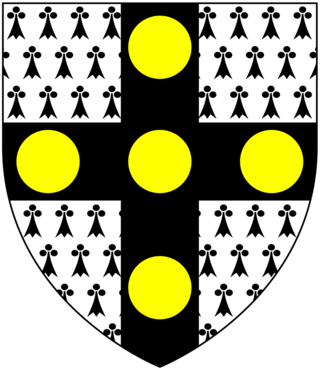
The Molesworth, later Molesworth-St Aubyn Baronetcy, of Pencarrow near St Mabyn in Cornwall, is a title in the Baronetage of England. It was created on 19 July 1689 for Hender Molesworth, Governor of Jamaica. The second Baronet sat as Member of Parliament for Lostwithiel and Bossiney. The fourth Baronet represented Newport and Cornwall in the House of Commons. The fifth and sixth Baronets sat as Members of Parliament for Cornwall. The eighth Baronet was a prominent Radical politician and served as Secretary of State for the Colonies from July to October in 1855.
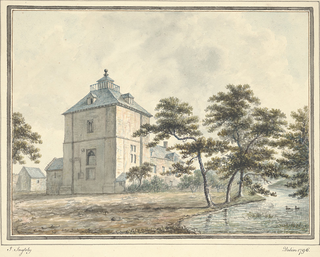
There have been two baronetcies created for persons with the surname Leighton, one in the Baronetage of England and one in the Baronetage of the United Kingdom. One creation is extant as of 2010.
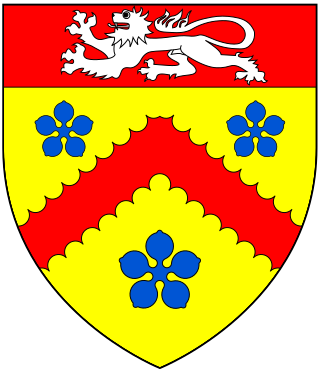
There have been three baronetcies created for persons with the surname Cooke, two in the Baronetage of England and one in the Baronetage of Ireland. One creation is extant as of 2013.

There have been two baronetcies created for persons with the surname Leicester, both in the Baronetage of England. The fifth Baronet of the second creation was raised to the peerage as Baron de Tabley in 1826. Both the barony and the two baronetcies are now extinct.
Sir John Ramsden, 4th Baronet was an English landowner and Member of Parliament.
References
Specific
- ↑ Cokayne, George Edward, ed. (1904), Complete Baronetage volume 4 (1665–1707), Exeter: William Pollard and Co, retrieved 9 October 2018
- ↑ "Huddesfield's history". Huddersfield Local History Society. Retrieved 5 September 2017.
- ↑ Morris, Susan; Bosberry-Scott, Wendy; Belfield, Gervase, eds. (2019). "Ramsden (E) 1689, of Byram, Yorkshire". Debrett's Peerage and Baronetage. Vol. 2 (150th ed.). London: Debrett's Ltd. pp. 5373–5378. ISBN 978-1-999767-0-5-1.
General
- Kidd, Charles, Williamson, David (editors). Debrett's Peerage and Baronetage (1990 edition). New York: St Martin's Press, 1990, [ page needed ]